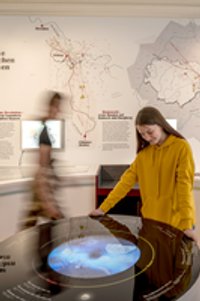Mündungsfragment eines Gefäßes (aus 6 Einzelfragmenten bestehend). Diese Fragmente sind Bestandteile einer großen Buckelkanne mit abgerundet doppelt-konischem Körper, eingezogenem Steiltrichterhals und innen abgeschrägter Mündung. Die Schulter zierten große Hofbuckel, innen ist die Wandung waagerecht verstrichen, kurz unterhalb des Umbugs ist eine wulstige Aufbaufuge erkennbar. Das Gefäß ist hart gebrannt. (vgl. Simon/Hauswald, Arbeits- und Forschungsberichte zur sächsischen Bodendenkmalpflege; 37(1995), S. 56 f., Abb. 44.5)
en

